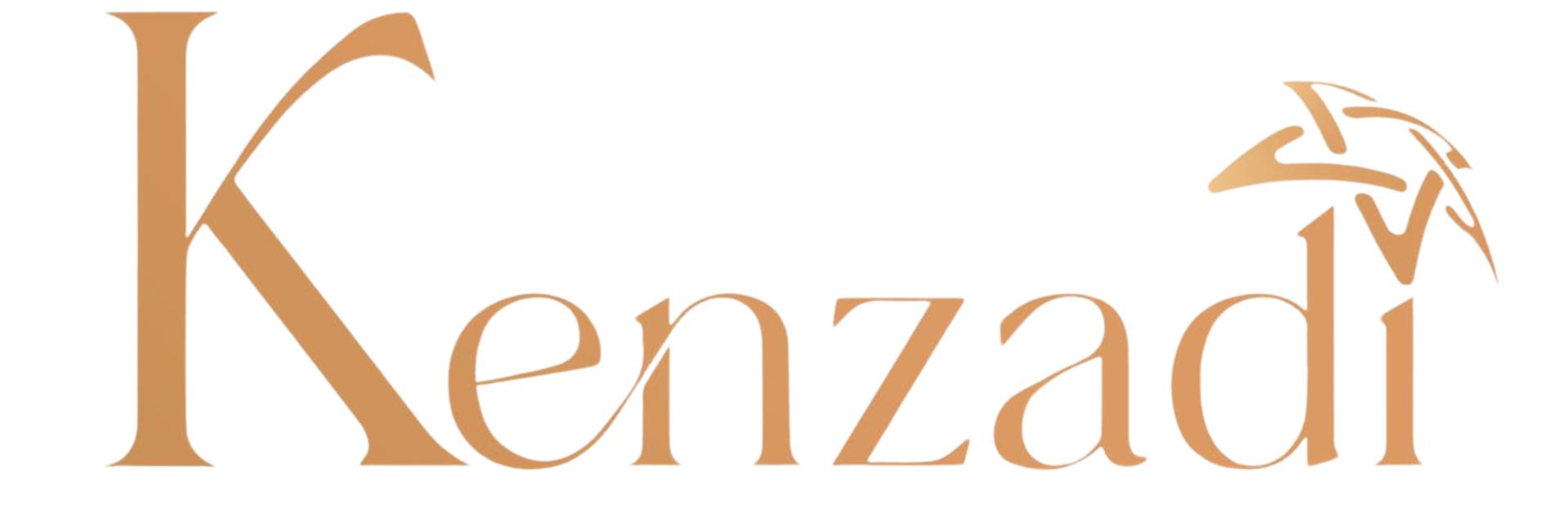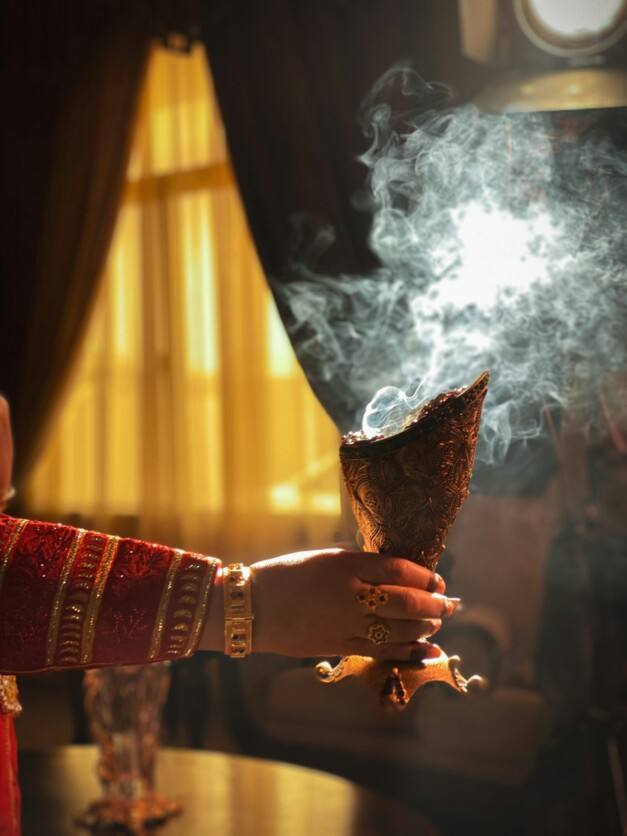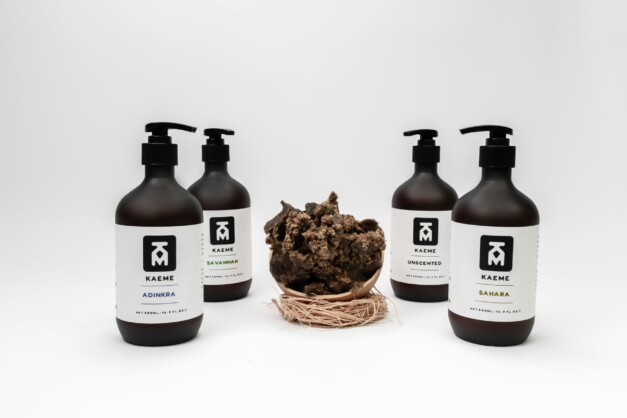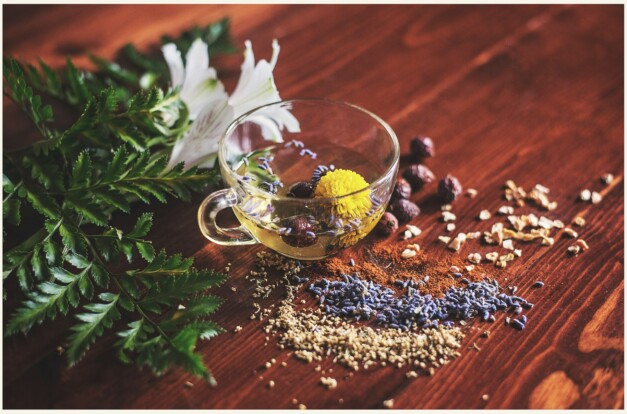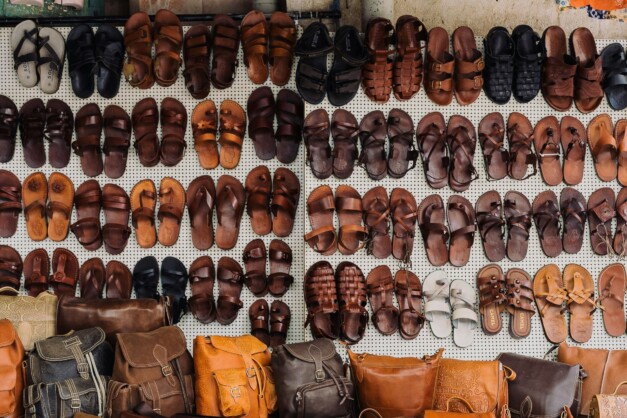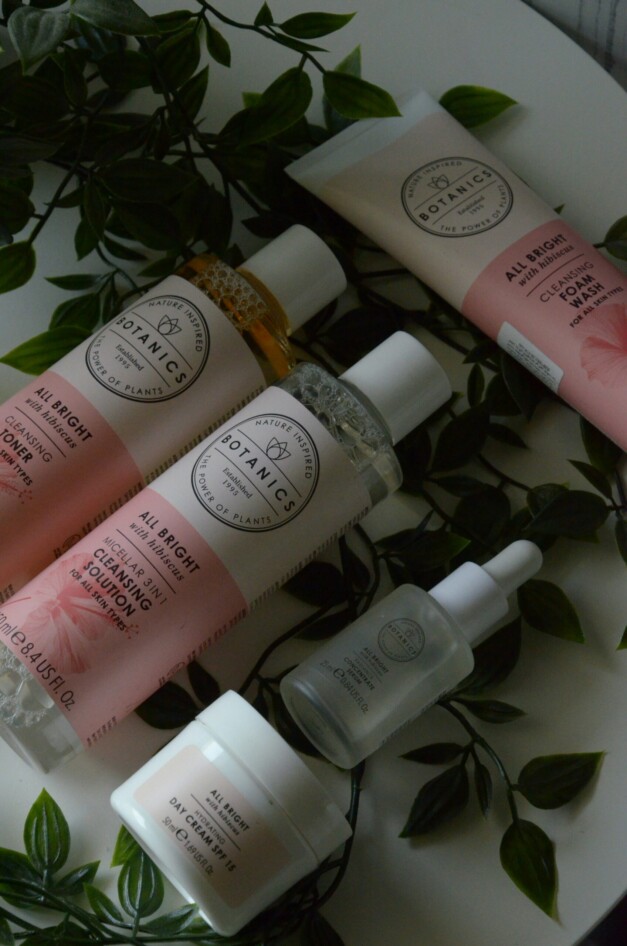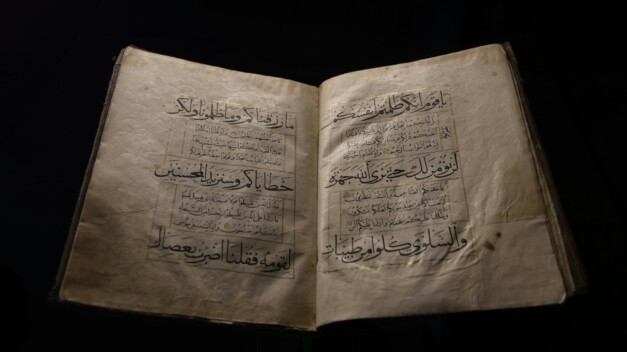Discover the Benefits of Kenzadi’s Moroccan Dahmiss Green Tea
What is Moroccan Dahmiss Green Tea? Moroccan Dahmiss green tea is a distinctive variety that originates from the lush, mountainous regions of Morocco. Renowned for its unique flavor profile and rich historical significance, Dahmiss tea has been an integral part of Moroccan culture for centuries. It is often consumed during social gatherings and traditional ceremonies, reflecting the country’s deep-rooted customs and hospitality. The characteristics that set Moroccan Dahmiss apart from other green teas include its vibrant green color, delicate flavor, and aromatic qualities. Unlike more widely recognized green teas, Dahmiss has a somewhat mellower taste, often described as sweet and floral, providing an inviting experience for both new and seasoned tea drinkers. This unique profile arises from the specific cultivation processes, which involve gentle hand-picking of fresh tea leaves and careful drying to preserve their quality and flavor. The cultivation of Dahmiss green tea is deeply intertwined with the region’s…
The Beauty of Moroccan Pompom Blankets: A Handcrafted Treasure from Kenzadi
Introduction to Moroccan Pompom Blankets Moroccan pompom blankets, also known as “boucherouite” or “boucherouite blankets,” are vibrant textile creations that embody the rich cultural legacy of Morocco. These beautiful blankets are handcrafted using traditional techniques, reflecting the artistic skills passed down through generations. The unique characteristics of Moroccan pompom blankets lie not only in their aesthetic appeal but also in their functional design and cultural significance. They are often made from recycled textiles, which adds an eco-friendly dimension to their allure. The blankets are typically adorned with colorful pompoms, a feature that enhances their charm and vibrancy. These pompoms are carefully handcrafted, contributing to the blanket’s distinctive personality. While the choice of colors and patterns varies widely, each blanket tells a unique story, representing the personal touch of the artisan. Moroccan pompom blankets serve practical purposes; they are often used for warmth during cooler nights in the desert or as…
Discover the Art of Custom-Made Carpets at Kenzadi.com
Introduction to Kenzadi.com Kenzadi.com stands as a premier online platform dedicated to the creation of bespoke carpets, uniquely crafted to meet the aesthetic and functional needs of discerning customers. With a commitment to quality and craftsmanship at its core, Kenzadi.com reflects the rich tradition of carpet making originating from Marrakech, a city renowned for its exquisite textile artistry and intricate patterns. At Kenzadi.com, each carpet is a testament to the skill and dedication of artisans who have honed their craft across generations. The website serves not only as a marketplace for custom-made carpets but also as an educational hub for customers interested in learning about the intricate art of carpet design. The user-friendly interface allows potential buyers to explore a variety of styles, colors, and materials, ensuring that every piece is tailored to individual preferences. Kenzadi.com takes great pride in delivering a product that seamlessly blends tradition with contemporary design,…
The Artistry of Fes: Crafting a Legacy of Handmade Ceramics
The Historical Significance of Ceramics in Fes The city of Fes, one of Morocco’s oldest cities, holds a distinguished place in the history of ceramics, reflecting a rich tapestry of cultural influences and artistic expression. The origins of ceramic production in Fes date back to the 8th century, when artisans began to explore and develop their skills, influenced by various civilizations that passed through the region. Early techniques were based on ancient practices brought by the Phoenicians, later enhanced by Islamic artisans who introduced intricate geometric patterns and vibrant colors that became synonymous with Fes’s ceramic identity. Throughout history, Fes emerged as a vital center for ceramic artistry, particularly during the Marinid dynasty in the 13th century. The regime’s emphasis on art and architecture led to the establishment of schools and workshops, fostering a generation of skilled artisans dedicated to the craft. These craftsmen utilized local clays, known for their…
Discovering the Essence of Tradition: Kenzadi.com’s Serghina Incense Mixed with Oud
Introduction to Serghina Incense and Oud Serghina incense and oud are deeply rooted in Moroccan culture, particularly in the historical city of Fes. These aromatic substances carry not only a rich fragrance but also significant cultural and spiritual heritage. Typically derived from indigenous plants, serghina has been traditionally used in various rituals and ceremonies, reflecting the deep connection Moroccans have with their natural environment. The delicate notes of serghina create an inviting and calming atmosphere, making it popular for both spiritual practices and daily life. Oud, often referred to as ‘liquid gold’, is an essential component of Moroccan perfumery. Derived from the Agarwood tree, this resinous substance exudes a complex, woody scent that has been cherished for centuries. Its use in incense is prevalent across many cultures, but in Morocco, it holds a special place in both social contexts and spiritual practices. Oud is typically burned in homes during family…
Top 10 Best-Selling Moroccan Products for Home Decor
Introduction to Moroccan Decor Moroccan decor is a vibrant and richly textured design style rooted in the cultural heritage of Morocco. This distinctive aesthetic draws from a variety of influences, including Berber, Arab, and Mediterranean cultures, resulting in a unique fusion that speaks to a broad range of tastes and preferences. By combining elements such as bold colors, intricate geometric patterns, and artisan craftsmanship, Moroccan decor transforms living spaces into inviting, exotic environments that resonate with warmth and personality. The colors used in Moroccan decor are particularly noteworthy, often featuring deep reds, royal blues, and rich yellows that evoke the spirit of the Moroccan landscape. These striking hues are frequently complemented by intricate tile work and hand-carved furniture, which further enhance the artistry at play. This artisanal approach, deeply rooted in tradition, emphasizes the significance of craftsmanship and the skill of local artisans. Each piece is often a testament to…
How to Buy Kenzadi Beach Caftan in the US and Canada
Introduction to Kenzadi Beach Caftans Kenzadi Beach Caftans have emerged as a popular choice for individuals seeking comfort and style during their beach outings. These garments are not only fashionable but also versatile, making them suitable for various occasions beyond just beachwear. Crafted with unique designs, Kenzadi caftans utilize vibrant colors and floral patterns that reflect the beauty of the ocean and its surroundings. The flowy and relaxed fit of the caftans allows for easy movement, making them ideal for both lounging by the sea and strolling along the shore. The materials used in Kenzadi Beach Caftans are selected for their breathable qualities, ensuring that wearers remain cool and comfortable in warm weather. Lightweight fabrics like cotton and linen are commonly employed, providing a soft touch against the skin while remaining practical for a day under the sun. This blend of style and functionality is one of the reasons why…
Kenzadi: High-Quality Beni Ouarain Carpets Delivered Next Day in the US and Canada
Introduction to Beni Ouarain Carpets Beni Ouarain carpets are renowned for their exquisite craftsmanship and unique aesthetic, originating from the Beni Ouarain tribe in the Middle Atlas Mountains of Morocco. These carpets are characterized by their thick pile, which is typically made from high-quality, natural wool sourced from local sheep. This wool possesses a soft texture that adds warmth and comfort to any living space, making Beni Ouarain carpets a popular choice for interior designers and homeowners alike. The historical significance of these carpets dates back centuries, deeply intertwined with the culture and traditions of the Berber tribes. Each carpet is handwoven by skilled artisans who have inherited their craft through generations. This traditional weaving technique not only reflects the artistic legacy of the Berber people but also emphasizes the importance of sustainable practices, as the materials used are often locally sourced and processed. Each knot and design in a…
Discovering Tazenakht: The Heart of Moroccan Carpets
Introduction to Tazenakht Region Tazenakht, a small but culturally significant town located in the southeastern part of Morocco, is approximately 80 kilometers away from the bustling city of Marrakech. Nestled at the foot of the Anti-Atlas mountains, this region is characterized by its breathtaking landscapes, which include rugged mountains, fertile valleys, and expansive fields. These natural features not only create a picturesque backdrop but also play a vital role in the cultural and economic activities of the local inhabitants. Historically, Tazenakht has been a center for the production of traditional Moroccan carpets, specifically the renowned Berber carpets. The town’s carpet weaving traditions can be traced back generations, with local artisans employing techniques handed down through families. This region is particularly famous for its vibrant colors and intricate patterns, which are often inspired by the natural scenery and the rich cultural heritage of the Berber people. Tazenakht carpets serve not only…
Uncover Radiant Skin: The Benefits of Arganit Kessa Glove with Moroccan Black Soap
Introduction to Arganit Kessa Glove and Moroccan Black Soap The Arganit Kessa glove is an essential tool in Moroccan bathing rituals, renowned for its ability to exfoliate and rejuvenate the skin. This traditional glove, made from coarse fibers, has been used for centuries within Hammam baths, serving as a crucial element for deep skin cleansing. Originating from Morocco, the Kessa glove harnesses the natural benefits of the region’s rich cultural heritage, allowing users to connect with time-honored practices while attending to their skincare needs. In conjunction with the Arganit Kessa glove, Moroccan black soap plays a significant role in creating an optimal body scrubbing experience. This unique soap, typically made from olives and enriched with essential oils, is deeply hydrating and acts as a natural exfoliant. The combination of the Kessa glove and Moroccan black soap promotes not only skin sloughing but also enhances moisture retention, resulting in a radiant…
The Art of Moroccan Black Soap: Creation and Scents
Introduction to Moroccan Black Soap Moroccan black soap, often referred to as ‘Beldi’ soap, is an integral element of Moroccan culture and traditions, particularly within the realm of skincare and bathing rituals. This unique soap, which is crafted from an array of natural ingredients, primarily olive oil and crushed olives, boasts a rich history that dates back centuries. Its historical significance can be traced to the ancient practices of Hammam, the traditional Moroccan steam bath, where this soap is used for cleansing and exfoliating the skin. The application of Moroccan black soap is a staple in the renowned Moroccan bathing rituals. It is employed as part of an extensive process that involves steam and scrubbing, aimed at detoxifying the skin and promoting relaxation. Users apply the soap to their skin after soaking in warm water, allowing the natural ingredients to penetrate and nourish the skin deeply. Following a brief waiting…
Exploring Sultan Tea: A Taste of Morocco in the US and Canada
Introduction to Sultan Tea Sultan Tea is a remarkable representation of Moroccan tea culture, which has become accessible to tea enthusiasts in the United States and Canada. Originating from Morocco, this tea is much more than a beverage; it embodies a way of life steeped in tradition and hospitality. The preparation and serving of tea in Morocco is a ritual that reflects deep cultural values, emphasizing notions of warmth, generosity, and community. Sultan Tea captures the essence of these values, offering a genuine taste of Moroccan hospitality. In Moroccan society, tea serves as an essential part of daily life, transcending mere consumption to become a symbol of friendship and hospitality. The traditional Moroccan mint tea, composed of gunpowder green tea, fresh mint leaves, and sugar, exemplifies this theme. Pouring tea from a height is an art form in Morocco, intended to aerate the infusion while showcasing a host’s skill. Sultan…
5 Reasons to Choose a Moroccan Leather Pouf Stuffed from Morocco
Introduction to Moroccan Leather Poufs If you’re looking to revamp your living space while adding a touch of culture, a Moroccan leather pouf is an excellent choice. These poufs are not only stylish but also serve various functional purposes. In this post, we will explore five compelling reasons to choose a Moroccan leather pouf stuffed from Morocco. 1. Authentic Craftsmanship Moroccan leather poufs are handcrafted by skilled artisans. Each pouf is made using traditional techniques passed down through generations, ensuring a unique and authentic piece for your home. Choosing a pouf stuffed from Morocco means you’re investing in a piece of art that showcases the rich heritage of Moroccan craftsmanship. 2. Eco-Friendly Materials Another reason to opt for a Moroccan leather pouf is its eco-friendly materials. These poufs are made from natural leather, which is often a byproduct of the local tanning industry. This sustainability aspect makes them a responsible…
The Benefits of Prickly Pear Seed Oil from Morocco in Cosmetics
Introduction to Prickly Pear Seed Oil Prickly pear seed oil, also known as cactus oil, is derived from the seeds of the prickly pear fruit, specifically from the Opuntia ficus-indica species. This oil is indigenous to regions of Morocco, where the prickly pear cactus thrives in arid environments. The extraction process involves cold-pressing the seeds, a method that preserves the oil’s beneficial properties and nutrient profile, making it an increasingly popular ingredient in cosmetic formulations. The rising interest in prickly pear seed oil within the cosmetics industry can be attributed to its exceptional composition. Rich in essential fatty acids, particularly linoleic acid, this oil plays a crucial role in maintaining skin hydration and elasticity. Additionally, its high concentration of antioxidants, such as vitamin E and carotenoids, helps to combat oxidative stress, protecting the skin from the damaging effects of free radicals. This nutrient profile not only supports healthy skin but…
Discover the Amazing Benefits of Moroccan Verbena from Kenzadi.com
Introduction to Moroccan Verbena Moroccan Verbena, scientifically known as Verbena officinalis, is a fragrant herb that holds a cherished place in Moroccan culture and history. Originating from North Africa, this plant thrives in the warm, sunny regions of Morocco, where it has been utilized for centuries due to its myriad of benefits. The leaves of Moroccan Verbena are characterized by their distinct lemony aroma, making them a favored ingredient in both culinary applications and traditional herbal remedies. At Kenzadi.com, customers can explore various varieties of Moroccan Verbena, each possessing unique properties and uses. Among the most sought-after types is Verbena hybrida, which is renowned for its vibrant leaves and delightful fragrance. As a powerful herbal ally, Moroccan Verbena is often used in teas, tinctures, and essential oils, showcasing its versatility in promoting health and wellness. The cultural significance of Moroccan Verbena extends beyond its practical applications; it is deeply interwoven…
The Timeless Beauty of Boucherwit Carpets: Handmade Treasures from Morocco
The Art of Boucherwit Weaving Boucherwit weaving represents not just a craft but a deeply rooted cultural tradition in Morocco. This intricate method of carpet-making has been passed down through generations, showcasing the exceptional artistry and technical skills of the weavers. Each Boucherwit carpet is a unique manifestation of creativity, using a symphony of colors and patterns that reflect the weaver’s personal experiences and cultural heritage. The weaving process begins with the careful selection of natural materials. Traditionally, Boucherwit carpets are crafted from high-quality wool, which provides durability and warmth. The wool is dyed using natural pigments derived from local plants and minerals, ensuring that each carpet maintains a connection to the Moroccan landscape. The dyeing process itself is an art form, where the weaver often experiments with various shades, resulting in hues that can be both vibrant and subdued. Boucherwit carpets also hold a significant place in Moroccan culture,…
The Enchantment of Thuya Trees: Crafting Exquisite Decor from Morocco
Introduction to Thuya Trees The Thuya tree, known scientifically as Tetraclinis articulate, is a unique evergreen conifer indigenous to the northwest of Africa, primarily in Morocco. These trees can grow to an impressive height of up to 20 meters and possess a distinctive, aromatic wood that is highly regarded for its durability and intricate grain. The foliage of the Thuya tree is characterized by small, scale-like leaves that are densely packed, creating a lush green canopy. This tree’s resilience allows it to flourish in a variety of conditions, particularly in the arid and semi-arid climates of the Moroccan landscape. In terms of growth environment, Thuya trees thrive in well-drained soils and tend to favor sandy or rocky terrains, illustrating their adaptability to the local ecosystem. Preferring areas with abundant sunlight, the Thuya tree often forms dense groves in regions like the UNESCO-listed Arganeraie, where it plays a crucial role in…
Starting Your Own Leather Home Goods Line: A Guide with Kenzadi.com
Understanding the Leather Home Goods Market The leather home goods market presents a unique opportunity for aspiring entrepreneurs, driven by a blend of evolving customer preferences and emerging trends. Currently, there is a growing demand for high-quality, sustainable leather products, as consumers increasingly prioritize durability and craftsmanship in their purchasing decisions. This shift is influenced by a broader movement towards sustainability, prompting customers to seek out items that not only serve functional purposes but also reflect their values regarding the environment and ethical production. Identifying target demographics is crucial in this sector. The market encompasses a diverse range of consumers, from young professionals seeking stylish decor items to families interested in practical, long-lasting products. Additionally, there is a notable inclination among affluent customers towards bespoke leather goods, showcasing a preference for customized items that cater to individual tastes. This demand for personalization underscores the necessity for leather home goods businesses…
Unlocking Beauty: How Kenzadi.com Enhances Your Skincare Experience with Top Cosmetic Labs in Marrakech
Introduction to Kenzadi.com and Its Vision Kenzadi.com is a pioneering online platform dedicated to enhancing the skincare experience by connecting customers with high-quality beauty products sourced from the most reputable cosmetic labs in Marrakech. As a hub for skincare enthusiasts, Kenzadi.com aims to elevate the standards of the beauty industry through a curated selection of items that reflect both efficacy and purity. With an increasing global awareness surrounding skincare, Kenzadi.com recognizes the importance of providing consumers with access to exceptional products that embody the rich heritage and natural resources of Morocco. The Moroccan beauty industry is renowned for its unique ingredients derived from the region’s diverse landscapes. Oils, botanical extracts, and minerals from Morocco have captured the attention of skincare aficionados and experts alike, leading to a growing demand for these premium products. Kenzadi.com seeks to bridge the gap between traditional Moroccan beauty secrets and modern skincare practices. By collaborating…
Micellar Water vs Toner: Which One Is Right for Your Skincare Routine?
Understanding Micellar Water Micellar water is a versatile skincare product celebrated for its gentle yet effective cleansing properties. Its unique formulation consists of tiny spherical molecules called micelles, suspended in soft water. Micelles act like magnets that attract dirt, oil, impurities, and makeup from the skin’s surface, ensuring a thorough yet gentle cleanse without the need for harsh chemicals or vigorous scrubbing. The composition of micellar water typically includes purified water, mild surfactants, and often, added skincare ingredients like glycerin or botanical extracts. This formulation not only cleanses but also hydrates the skin, making it especially advantageous for those with sensitive skin or those who prefer a lighter cleansing option. Its ability to effectively remove makeup and impurities while maintaining the skin’s natural moisture balance is a key reason for its growing popularity. One of the significant benefits of using micellar water is its compatibility with various skin types. Whether…
Discover the Unique Elegance of Custom Leather Pillows from Kenzadi.com
Introduction to Kenzadi.com and Their Custom Leather Pillows Kenzadi.com stands out as a distinctive brand specializing in upscale home decor items, particularly custom leather pillows that embody sophistication and craftsmanship. With deep Moroccan roots, the company draws inspiration from the rich cultural heritage of Morocco, interweaving traditional design with contemporary aesthetics to create unique pieces for modern homes. Each leather pillow is more than just a decorative accessory; it is a reflection of artisanal skill and a commitment to quality. The process of creating custom leather pillows at Kenzadi.com begins with sourcing the finest materials. The brand prides itself on using premium leather, which not only enhances the aesthetic appeal of the pillows but also ensures their longevity and durability. The pillows are meticulously handcrafted by skilled artisans who employ techniques that have been passed down through generations. This dedication to authentic craftsmanship is what sets Kenzadi.com apart in a…
The Importance of Moroccan Argan Oil for a Healthy Beard
Understanding Moroccan Argan Oil Moroccan argan oil is derived from the nuts of the argan tree (Argania spinosa), which is native to Morocco. The extraction process involves several steps, beginning with the collection of ripe argan nuts, which are often gathered by local women as part of community cooperative efforts. Once collected, the nuts are cracked open to access the edible kernels inside. These kernels are then cold-pressed to yield the oil, a method that preserves its beneficial properties, flavor, and aroma. Argan oil is renowned for its rich nutrient profile, containing a variety of essential fatty acids, vitamins, and antioxidants. It is especially high in oleic acid and linoleic acid, both of which play vital roles in maintaining skin and hair health. Oleic acid helps to enhance the absorption of nutrients, while linoleic acid contributes to skin hydration and elasticity, making argan oil a sought-after ingredient in cosmetic and…
Discover the Beauty of Henna Sahara Tazarine: Your Go-To Natural Henna Powder
Introduction to Henna: A Natural Beauty Solution Henna, a remarkable natural product derived from the leaves of the Lawsonia inermis plant, has been utilized for centuries in various cultures across the globe. Known for its vibrant dye, henna has transitioned from traditional body art to an essential component in contemporary beauty routines. Its versatility allows it to be used for hair dyeing, skin decoration, and even as a soothing remedy for various skin conditions, making it a comprehensive beauty solution. The benefits of henna are numerous. As a natural dye, it is free from harsh chemicals, which often accompany synthetic alternatives. This makes henna an appealing choice for individuals seeking to enhance their natural beauty while minimizing exposure to potentially harmful substances. In addition, henna possesses anti-inflammatory and antimicrobial properties, further establishing its reputation as a beneficial ingredient in skincare and haircare products. High-quality henna powder is crucial for achieving…
How to Choose the Best Leather Pillows for Your Sofa
Understanding Leather Types When it comes to selecting the best leather pillows for your sofa, it is essential to understand the different types of leather available on the market. Each type has unique characteristics that influence not only the aesthetic appeal but also durability, texture, and maintenance requirements. The three primary types of leather are full-grain, top-grain, and genuine leather. Full-grain leather is considered the highest quality among leather types. It is made from the entire grain layer of the hide, which retains the natural imperfections and markings. This type of leather is highly durable, developing a beautiful patina over time, reflecting its aging process. Its breathability and ability to resist moisture also make full-grain leather an excellent choice for furniture upholstery, including pillows. However, it may require more maintenance to keep its look pristine. Top-grain leather, while still high quality, is sanded and finished to remove imperfections. This process…
A Guide to Choosing the Perfect Islamic Calligraphy Painting for Your Home
Understanding Islamic Calligraphy Islamic calligraphy is an esteemed art form that has evolved over centuries, rooted in the cultural and spiritual dimensions of Islamic civilization. Originating within the context of the Quranic tradition, calligraphy became a means of expressing religious devotion and aesthetic sensibilities. Rather than relying on imagery, which is often restricted in Islamic art, calligraphy allows for the visual representation of profound spiritual concepts through beautifully rendered script. The significance of Islamic calligraphy extends beyond mere decoration; it serves as a bridge between the Divine and the material world. Each stroke is imbued with meaning, intended to inspire the viewer and stimulate a sense of spirituality. Calligraphy has been employed in various contexts, appearing in mosques, religious texts, and artifacts, making it a central aspect of Islamic heritage. Several distinct styles of Islamic calligraphy have emerged, each with its unique characteristics and historical contexts. For instance, the Naskh…
